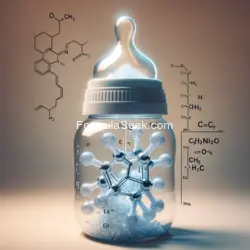
The Significance of L-Cystine Dihydrochloride in Infant Nutrition
Table of Contents
When it comes to infant formula, every ingredient serves a specific purpose to ensure the health and development of babies, especially those who cannot be breastfed. One such ingredient, often listed among many, is L-Cystine Dihydrochloride. Though not commonly discussed, it plays a crucial role in infant nutrition.
What is L-Cystine Dihydrochloride?
L-Cystine Dihydrochloride is a dietary supplement, a form of the amino acid cystine. Cystine is essential for infants as it aids in building proteins necessary for growth and development. In its dihydrochloride form, it is more stable and easier to incorporate into formula.
Why is L-Cystine Dihydrochloride Added to Infant Formula?
Protein Synthesis: Cystine is a component of proteins. Since infants are in a rapid growth phase, they need a high amount of proteins for muscle development, organ growth, and other bodily functions.
Enhancing Immune System: Cystine is known to boost glutathione levels, a powerful antioxidant that helps in protecting cells from damage and supports the immune system.
Hair and Skin Health: Cystine is also involved in the health of hair and skin, being a constituent of keratin, which gives strength and structure to these tissues.
Mimicking Breast Milk: Breast milk naturally contains cystine. Adding L-Cystine Dihydrochloride to formula makes it more similar to breast milk, ensuring that formula-fed infants receive a comparable diet.
Safety and Digestibility: It's also important to note that L-Cystine Dihydrochloride is safe and easily digestible for infants, making it a suitable component in infant formula.
Conclusion
The inclusion of L-Cystine Dihydrochloride in infant formula is a testament to the scientific understanding of infant nutrition. It ensures that formula-fed babies get a balanced diet supporting their rapid growth and development in their early life stages. Parents can be reassured that such ingredients, while not always well-known, are included for their vital role in the health and well-being of their infants.



